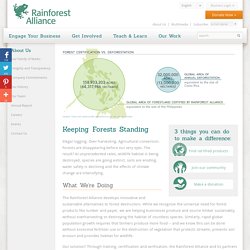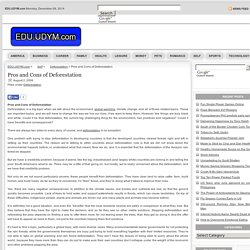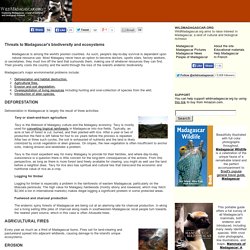

Keeping Forests Standing. Illegal logging.

Over-harvesting. Agricultural conversion. Forests are disappearing before our very eyes. The result? At unprecedented rates, wildlife habitat is being destroyed, species are going extinct, soils are eroding, water safety is declining and the effects of climate change are intensifying. What We’re Doing The Rainforest Alliance develops innovative and sustainable alternatives to forest destruction. Our solution? Evaluating Our Impact To make sure that we are as effective as possible, we routinely conduct and evaluate impact studies on our work and continually adjust our approach. Help us keep forests standing » Learn About How We Are Also... News: Rain Forest. For centuries, humans have relied on rain forests for a variety of products.

Foods such as tomatoes, peppers, corn, rice, coconuts, bananas, coffee, cocoa, tapioca, beans, and sweet potatoes all originally came from the rain forest. Many civilizations have exploited the timber in rain forests and cleared the land for farms. Some preliterate tribes have actually lived in the rain forests for thousands of years. Today people rely on tropical rain forests for a variety of everyday products: paper (7 percent of all paper pulp comes from the rain forest); rubber (used in tires and other products); wax (used in plastics); mahogany and teak (used in wood products such as furniture); and many other items.
Destructive Activities Unfortunately, human activities have taken a toll on the rain forest. Farming. Cattle ranching also poses a danger to rain forests. Pros and Cons of Deforestation. Pros and Cons of Deforestation Deforestation is a big topic when we talk about the environment, global warming, climate change, and all of those related topics.

These are important topics, and we will have to change the way we live our lives, if we want to keep them. However, few things are truly black and white. Could it be that deforestation, the current big challenging thing for the environment, has positives and negatives? Could it have benefits and consequences? There are always two sides to every story, of course, and deforestation is no exception. One problem with trying to stop deforestation in developing countries is that the developed countries cleared forests right and left in setting up their countries. But we have a credibility problem, because it seems like the big, industrialized (and largely white) countries are coming in and telling the poor South Americans what to do.
Not only do we not sound particularly sincere; these people benefit from deforestation. Threats to Madagascar's Environment. Tavy or slash-and-burn agriculture Tavy is the lifeblood of Malagasy culture and the Malagasy economy.

Tavy is mostly used for converting tropical rainforests in Madagascar into rice fields. Typically, an acre or two of forest is cut, burned, and then planted with rice. After a year or two of production the field is left fallow for four to six years before the process is repeated. After two or three such cycles, the soil is exhausted of nutrients and the land is likely colonized by scrub vegetation or alien grasses. Tavy is the most expedient way for many Malagasy to provide for their families, and where day-to-day subsistence is a question there is little concern for the long-term consequences of the actions. Logging for timber Logging for timber is especially a problem in the rainforests of eastern Madagascar, particularly on the Masoala peninsula. Fuelwood and charcoal production The endemic spiny forests of Madagascar are being cut at an alarming rate for charcoal production.
Deforestation in the Amazon. We rode a small boat on that scorching day with an even smaller motor.

The cool water sprayed my face as we passed scenery like I had never seen before. The forest played with my senses as our boat’s passengers marveled at the exotic life surrounding us. We passed villages, birds and trees that seemed straight out of the National Geographic picture show. While I’ve always cared about the environment, it wasn’t until my trip last summer to the Amazon Forest that I understood why.
How could a place with so much beauty be in such danger of destruction and deforestation? The Amazon Rainforest is also home to the largest variety of species in the world, from insects to dolphins to birds. According to the Rainforest Action Network, if deforestation continues at this rate the rainforest will be entirely lost by 2060. Loss of the Amazon Rainforest also means loss of native peoples who have lived in the Amazon for thousands of years.